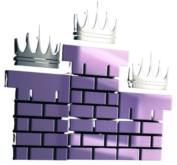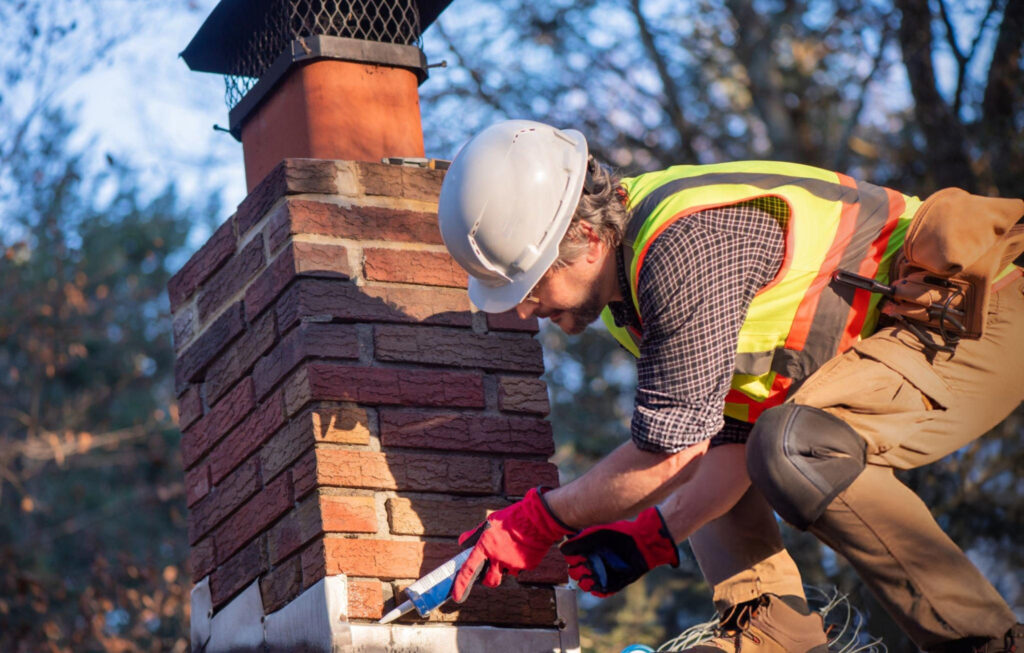Taking care of your chimney is just as important as any other part of your home, especially in a place like Wilmington where changing seasons can impact its condition. The structure of a chimney faces all kinds of weather, from sunny hot days to chilly winters. Over time, this exposure can wear down the mortar joints that keep the bricks in place, which may lead to structural problems. That’s where chimney maintenance, specifically repointing, comes into play.
Chimney repointing involves refreshing the mortar joints between your chimney’s bricks. It’s not just about looks; the process keeps your chimney safe and sturdy, preventing costly repairs down the line. This article breaks down common chimney repointing techniques, so you know what to expect when it’s time for maintenance. Understanding these methods can help you appreciate the value of well-maintained masonry, ensuring that your home remains safe and warm in Wilmington’s varied climate.
Understanding Chimney Repointing
Chimney repointing might sound complicated, but it’s pretty simple when broken down. Essentially, it involves removing and replacing the old, damaged mortar between the bricks of your chimney. Over time, weather elements can cause the mortar to crumble or fall out, which may lead to cracks and water seepage if ignored.
There are a few clear signs indicating your chimney might need repointing:
– Visible gaps between the bricks
– Crumbling or missing mortar
– Water leaks or damp patches inside the home
– White powdery substance on the chimney (also known as efflorescence)
These signs are like the red flags waving for attention. If you spot them early, you can avoid more severe damage, which keeps your chimney safe and your home dry.
The benefits of repointing go beyond immediate repairs. By repointing, you protect your chimney from future wear and tear, extending its lifespan significantly. With a robust chimney, you shield your home from potential structural issues and make sure your fireplace is ready to keep you cozy. Regular maintenance, like chimney repointing, acts as a shield, protecting your investment and your family’s safety.
Common Chimney Repointing Techniques
When it’s time to repoint your chimney, there are several techniques that professionals use. Each one has its own benefits and is chosen based on the condition and needs of your chimney. Here’s a closer look at some popular methods:
Traditional Method
– In this method, the old, loose mortar is removed from the joints using hand tools or a grinder.
– The cleaned joints are then filled with a new mortar mix, often made to match the original color and texture.
– Once applied, the mortar is smoothed out, and any excess is cleaned to give a neat finish.
Flush Repointing
– Flush repointing involves sealing the mortar joint at the same level as the bricks.
– It’s used when the existing mortar is mostly intact but needs a touch-up for strength.
– This method provides a uniform appearance and ensures water doesn’t seep into the joints.
Weather-Struck Repointing
– Ideal for chimneys exposed to harsh weather conditions, this technique provides better rain resistance.
– The mortar is angled to create a sloped joint, causing water to run off easily.
– This process not only offers protection but also enhances the aesthetic appeal of the chimney.
Understanding these techniques can help homeowners make informed decisions about maintaining their chimneys, ensuring they remain a beautiful and functional part of their homes in Wilmington.
Tuckpointing
Tuckpointing is another sophisticated method used to repair chimneys. Unlike basic repointing, tuckpointing gives the appearance of fine masonry work by using two different colors of mortar. This technique creates a look that the bricks have narrow and fine joints. It’s an excellent choice for historic homes or those who wish to maintain a particular aesthetic charm.
Here’s how tuckpointing is typically done:
– The old, damaged mortar is removed to a uniform depth across joints.
– Two contrasting colors of mortar are prepared. One matches the brick color, and the other one, often lighter, simulates the appearance of thin joints.
– The mortar matching the bricks is applied first, filling the joints.
– A thin line of the lighter mortar is then carefully applied, creating the illusion of precise, thin joints.
Tuckpointing not only enhances the visual appeal but also strengthens the structure. It’s particularly useful in preserving the integrity and heritage look of older residences in Wilmington, adding both durability and elegance to your chimney.
Choosing the Right Method
Selecting the appropriate repointing technique for your chimney involves several considerations. Whether you have a new structure or an older chimney, different methods have their advantages. Here’s how you can decide which technique might be best:
– Condition of the Chimney: Evaluate whether the damage is mainly surface-level or more extensive. For light touch-ups, flush repointing could suffice, while deeper structural issues might call for the traditional method.
– Environmental Factors: Consider Wilmington’s climate when choosing. Weather-struck repointing might be more suitable for chimneys that regularly face heavy rain and wind.
– Aesthetic Preferences: For those who value the visual aspect, especially in historic homes, tuckpointing can provide the dual benefit of aesthetic precision and structural support.
– Professional Advice: Consulting with masonry experts can provide insights into what your specific situation requires. They can analyze your chimney’s unique needs and suggest the best course of action.
The right technique ensures your chimney stands strong against seasonal changes, offering you a safe and lasting investment.
Final Thoughts on Chimney Repointing
Taking timely action in maintaining your chimney can significantly extend its life and enhance safety. Recognizing the signs of wear such as missing mortar or damp patches can save you from dealing with larger, more expensive repairs. Repointing is an effective way to revitalize both the function and appearance of your chimney.
Keeping this part of your home in good condition not only safeguards your family but also protects the overall value of your property. By selecting the right repointing strategy, considering both functional needs and aesthetic desires, you ensure that your chimney remains a cornerstone of your home’s comfort and harmony. Exploring these methods and weighing your specific needs will pave the way for a well-maintained and reliable chimney.
To ensure your chimney remains a strong and elegant feature of your home, it’s important to choose the most suitable repointing technique. Consider the methods discussed and consult with the professionals at Triple Crown Chimney Solutions. If you’re interested in learning more about maintaining your chimney and wish to explore various services, discover how repointing chimneys can help protect your home in Wilmington today.

